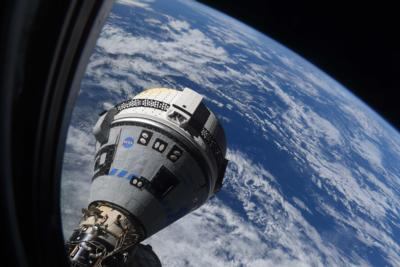To Boldly Go…
NASA has assigned two astronauts to the agency’s Boeing Starliner-1 launch to the International Space Station, the spacecraft’s first planned mission following completion of its flight-testing and certification programs.

Astronauts Scott Tingle and Mike Fincke will serve as the CST-100 Starliner spacecraft commander and pilot, respectively. Both men are space veterans, having each previously flown as crew members aboard the space station.
NASA astronaut Jeanette Epps remains assigned as a mission specialist on Starliner-1. Epps continues, however, to cross-train on SpaceX’s Dragon spacecraft—just in case Starliner’s woes outlast NASA’s patience and goodwill.
The Starliner crew rotation missions to the space station will carry four crew members per launch. Future Starliner-1 crew assignments will be made following review and approval by the agency and its international partners.
Prior to blasting off under the auspices of Messrs. Tingle and Fincke, Starliner-1 must first successfully complete NASA’s Boeing Crew Flight Test (CFT)—a manned mission undertaken for purpose of demonstrating Starliner’s ability to safely conduct crewed spaceflight, and a prerequisite to the spacecraft’s being granted NASA certification.

Boeing has slated the test flight for February 2023, pending space station program approval, rocket manifest, and confirmation by the Eastern Range—the American spaceport/rocket-range that supports missile and rocket launches from Cape Canaveral Space Force Station and the Kennedy Space Center. Assuming the antecedent conditions are met, Starliner will launch aboard a United Launch Alliance Atlas V rocket from Space Launch Complex-41 at Florida’s Cape Canaveral Space Force Station.
Upon successful completion of the crewed flight test, NASA will begin the final process of certifying the Starliner spacecraft and systems to function as an operational component of the agency’s Commercial Crew Program.
The 21st Century has been rough for Boeing. The company has seen its iron grip on the commercial aircraft market loosened by the 787 Dreamliner’s initial battery woes, the 737 MAX’s highly-publicized shortcomings and resultant grounding, and the more recent discovery of manufacturing flaws that led to an FAA mandated halt to 787 deliveries. On the military front, Boeing’s X-32—into which the company sank the better part of $1-billion—lost out to Lockheed Martin’s X-35 in the Joint Strike Fighter competition, thereby denying Boeing the lion’s share of the history’s richest military procurement contract.
Boeing’s fortunes in space have proved equally meager. The final and fabulously flush frontier upon which SpaceX, Blue Origin, and Rocket Lab have banked veritable embarrassments of riches has, for Boeing, brought merely embarrassment. United Launch Alliance—the Boeing-Lockheed Martin joint space-launch venture—has persistently teetered at the precipice of bankruptcy and suffered delays and setbacks enough to prompt SpaceX boss Elon Musk to call the venture a “complete waste of taxpayer money.”
Starliner, too, has proved reluctant to get off the literal and figurative ground. The contraption’s first orbital test flight was plagued with failures and errors of such severity that the craft was nearly lost—twice. The poor showing occasioned an investigation that turned up no fewer than eighty corrective recommendations. As the full list of post-flight recommendations was deemed company-sensitive and proprietary, only those changes publicly disclosed are known—which is to say the identified problems and resultant recommendations may have numbered a great deal more than eighty.

Starliner’s second orbital test flight—unplanned but necessitated by the sloppy inaugural outing—was protractedly delayed as Boeing engineers grappled with successive software and propulsion system malfunctions. When Orbital Flight Test Two (OFT-2) finally launched on 19 May 2022, the mission was plagued by multiple thruster, cooling system, and navigational breakdowns.
How Starliner fares in its upcoming, high-stakes, crewed test flight remains to be seen. That Boeing shareholders and the families of the brave astronauts aboard the spacecraft will be looking on with great apprehension is a moral certainty, however.
 ANN's Daily Aero-Term (04.26.24): DETRESFA (Distress Phrase)
ANN's Daily Aero-Term (04.26.24): DETRESFA (Distress Phrase) ANN's Daily Aero-Linx (04.26.24)
ANN's Daily Aero-Linx (04.26.24) Airborne 04.22.24: Rotor X Worsens, Airport Fees 4 FNB?, USMC Drone Pilot
Airborne 04.22.24: Rotor X Worsens, Airport Fees 4 FNB?, USMC Drone Pilot Airborne 04.24.24: INTEGRAL E, Elixir USA, M700 RVSM
Airborne 04.24.24: INTEGRAL E, Elixir USA, M700 RVSM Airborne-NextGen 04.23.24: UAVOS UVH 170, magni650 Engine, World eVTOL Directory
Airborne-NextGen 04.23.24: UAVOS UVH 170, magni650 Engine, World eVTOL Directory




